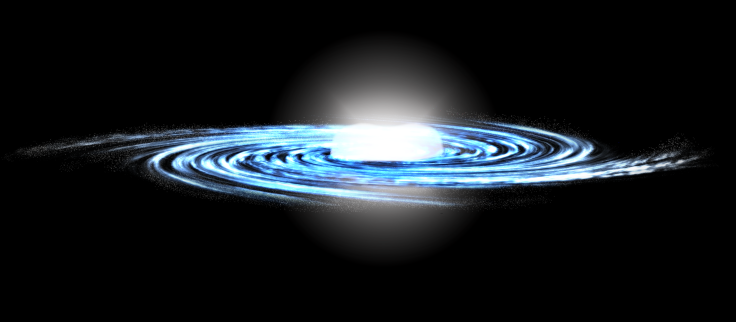Mysterious Gamma-Ray Signal From Milky Way Center Not What Astronomers Thought

A mysterious gamma-ray signal was shot out from the heart of our very own Milky Way galaxy. Although astronomers previously thought the strange signal came from dark matter – that is not the case. Instead, a recent study indicates that the strange signal came from ancient stars that are believed to be nearly 10 billion years old.
The new study is the work of researchers from the Australian National University (ANU), who had a working hypothesis – the signal came from millisecond pulsars, which are thousands of rapidly spinning neutron stars.
“At the distance to the centre of our galaxy, the emission from many thousands of these whirling dense stars could be blending together to imitate the smoothly distributed signal we expect from dark matter,” Dr. Roland Crocker from the ANU Research School of Astronomy and Astrophysics, said in a statement. “Millisecond pulsars close to the Earth are known to be gamma-ray emitters.”
According to Dr. Crocker, the findings of the new study refute a provocative theory that proposed that the gamma-ray signal originated from dark matter. There is much that scientists are yet to know or understand about the elusive dark matter, which are invisible particles that have till date, not been scientifically observed.
According to scientists at CERN, unlike normal matter, dark matter does not interact with electromagnetic force. In other words, dark matter doesn’t emit, absorb or reflect light, which makes it highly challenging for researchers to find it. So far, scientists have only been able to ascertain the existence of dark matter from the gravitational effect it appears to have on other visible matter.
However, the theory that the universe is largely made up of dark matter and dark energy, is widely accepted in the scientific community.
“More is unknown than is known. We know how much dark energy there is because we know how it affects the universe's expansion. Other than that, it is a complete mystery. But it is an important mystery. It turns out that roughly 68% of the universe is dark energy. Dark matter makes up about 27%. The rest - everything on Earth, everything ever observed with all of our instruments, all normal matter - adds up to less than 5% of the universe,” Nasa said in a statement.

“It is thought that dark matter is composed of Weakly Interacting Massive Particles, which would be expected to gather in the centre of our galaxy,” Dr Crocker said. “The theory is that, very occasionally, these particles crash into each other and radiate light a billion times more energetic than visible light.”
The Fermi Gamma-Ray Space Telescope, which has been circling the Earth in a low orbit since 2008, has provided scientists with the clearest view of the gamma-ray sky, within this energy range. The signal Fermi detected traces the distribution of stars in the Galactic bulge, hinting that the gamma-ray signal likely came from millisecond pulsars.
“While the centre of our galaxy may be rich in dark matter, it is also populated by ancient stars that make up a structure called the Galactic bulge,” Dr Crocker added. “Ongoing observational and theoretical work is underway to verify or refute the hypothesis that the gamma-ray signal comes from millisecond pulsars,” Dr Crocker said.
The findings of the new study have been published in the journal Nature Astronomy.
© Copyright IBTimes 2025. All rights reserved.





















